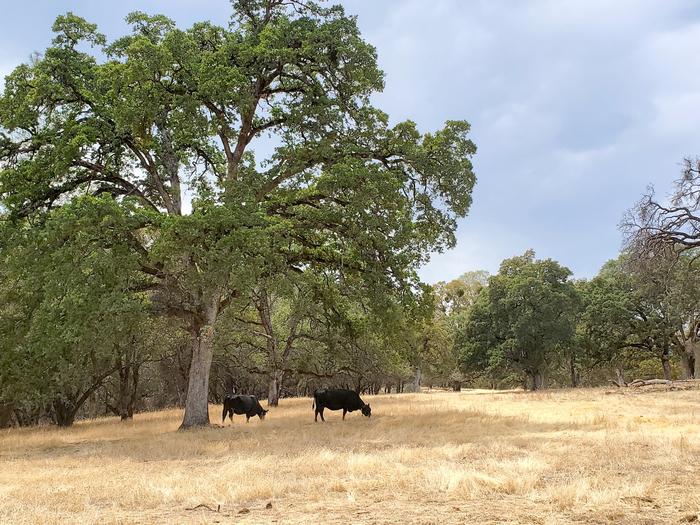
In the expansive realms of cattle ranching, understanding the grazing behavior of cattle is not merely an exercise in observation; it is a pivotal component in the quest for sustainable agricultural practices. Recent research conducted by animal scientists at the University of California, Davis, reveals that the personalities of grazing cattle significantly impact their movement patterns, leading to more effective grazing management. The study, published in the esteemed journal Scientific Reports, shines a light on the intricacies of cattle behavior and its implications on land use and ecological balance.
The primary objective of the study was to discern whether certain behaviors in cattle could be predictive markers of their grazing habits. Researchers set out to explore whether they could streamline the process of identifying cattle that are more prone to wander off in search of pasture, versus those that prefer to remain close to the herd. To achieve this, the team used a relatively simple method while leveraging the advanced technology of GPS tracking collars on 50 pregnant Angus and Hereford cows over a expansive mixed-use land site of 625 acres, dotted with both grasslands and wooded areas.
During the study, researchers conducted routine procedures such as pregnancy checks and vaccinations in narrow chutes, which served as a controlled environment to evaluate the cows’ responses. Here, cattle were provided with a choice: they could join their fellow herd members or pursue a sweet molasses feed strategically placed at varying distances. This experimental setup allowed scientists to observe the cattle’s behavior in real-time and draw conclusions about their grazing instincts. Remarkably, they found that the cows that exhibited more deliberate and slower movements, opting for the molasses feed even when it meant deviating from the herd, corresponded with those categorized as “grazing wanderers.”
In stark contrast, those designated as “homebodies” consistently preferred to reunite with their herd rather than venture for a treat. This dichotomy became apparent as researchers noted the distinct choices made by the cows, each movement suggesting an inclination toward specific grazing habits. The study built upon previous findings that identified cattle behavior as a spectrum ranging from those eager to explore broad landscapes to others who exhibited a stronger preference for staying in close proximity to their social group.
The ramifications of this research are profound, not only in nurturing a better understanding of cattle but also in addressing broader environmental concerns. Uneven grazing patterns can lead to degradation of water quality and soil health if large numbers of cattle congregate in singular areas for long periods. Conversely, herds with wanderers that cover more ground can optimize pasture use while improving the nutritional intake for the animals. These findings thus provide a foundational tool for ranchers, possibly leading to economic benefits through enhanced livestock health and pasture sustainability.
While the study provides a clearer picture of cattle behavior, it also lays the groundwork for future inquiries into the genetics of grazing personalities. One avenue of ongoing research aims to determine whether these grazing tendencies are inheritable. By evaluating the behaviors of the offspring of the studied cows, scientists hope to establish whether traits observed in adult cattle are passed down to the next generation. The curiosity extends to examining environmental elements and maternal influence on grazing preferences, questioning whether adopted calves mirror the behaviors of their surrogate mothers or lean towards their biological backgrounds.
Furthermore, UC Davis is collaborating with researchers in New Zealand and New Mexico to analyze genetic material harvested from the cows involved in this investigation. The objective is to uncover potential genetic markers that correlate with grazing personality traits. This approach could provide new insights into cattle behavior, potentially guiding selective breeding practices aimed at enhancing desirable traits for sustainable grazing outcomes. Past research conducted by eminent figures in the field, such as emeritus professor Juan Medrano, has paved the way for this genetic exploration, focusing on the lifestyle classifications of cattle based on their grazing propensities.
The driving force behind these investigations, Kristina Horback, an associate professor in the Department of Animal Science, articulates the significant implications of their findings. She emphasizes the pivotal role cattle play in our agricultural ecosystems and the necessity of understanding their behaviors to foster both ranching efficiency and ecological balance. Horback notes that with cattle exhibiting varying degrees of inclination to explore, ranchers may leverage these insights to create management strategies that benefit both the animals and the land they inhabit.
The implications of understanding grazing personalities extend beyond individual animal care; they touch on broader concerns regarding sustainable land management and ranching practices. By promoting a grazing pattern that discourages over-concentration in particular areas, ranchers can protect vital ecosystems from degradation, support biodiversity, and minimize their ecological footprint. The efficient distribution of grazing also has the potential to mitigate wildfire risks by reducing excess fuel loads in specific areas.
In summary, the pioneering work at UC Davis on the grazing patterns of cows unveils a sophisticated interplay between animal behavior, genetics, and environmental stewardship. It underscores the importance of academic research as a catalyst for advancing agricultural practices that can help balance productivity with ecological responsibility. Future studies promise to deepen our comprehension of cattle grazing behaviors and their implications, potentially revolutionizing how we approach livestock management in an era increasingly marked by climate change and environmental challenges.
Subject of Research: Cattle grazing behavior and personality
Article Title: Cows that are less active in the chute have more optimal grazing distribution
News Publication Date: 2-Jan-2025
Web References: Scientific Reports
References: http://dx.doi.org/10.1038/s41598-024-84090-z
Image Credits: Kristina Horback / UC Davis
Keywords: cattle behavior, grazing personalities, sustainable ranching, environmental impact, genetic research
Tags: advancements in agricultural researchAngus and Hereford cattle studiesbehavioral markers in livestockcattle behavior and pasture selectioncattle grazing behavior analysiscattle movement patterns researchecological balance in agricultureeffective grazing management techniquesGPS tracking in livestock managementimpact of cattle personality on grazingranching and land use strategiessustainable cattle ranching practices





